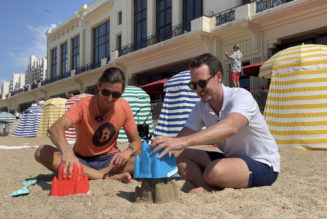
Airbus will use its Zephyr High Altitude Platform Station to expand connectivity services to underserved communities. PHOTO | COURTESY
Last week, senior managers of AALTO, a subsidiary of European aerospace company Airbus, pitched camp in Kenya to make a case for regulatory approvals to set up an operating base for the unit’s high-altitude drones.
AALTO has been developing the platform, which is known as Zephyr High Altitude Platform Station (Zephyr HAPS), for the past 20 years and is looking to use the Kenya base for further test flights next year ahead of a commercial launch.
What is the Zephyr HAPS and what does it do?
The Zephyr is a high-altitude, lightweight solar-powered platform that is designed to fly in the stratosphere at around 70,000 feet above weather and conventional air traffic.
The platform is designed to remain in flight for more than 30 days at a time, relying on secondary batteries charged in daylight for overnight flights.
Zephyr will be used mainly for earth observation for civilian and defence purposes and as a communications tower in the sky, targeting remote locations that otherwise don’t justify the cost of ground masts.
AALTO chief executive Samer Halawi said the current version of the aircraft can only carry one payload at a time, but future versions will be able to carry two different loads.
“But it’s unlikely that we will have two different payloads doing two different missions,” he said.
Why is Airbus looking to set up an operating base in Kenya?
Kenya’s Laikipia area has been selected as the first operating hub for the Zephyr platform by AALTO, pending approvals by the government.
In choosing Kenya, the company has taken into consideration several factors, including the availability of open, flat space to land and launch the craft, in an airspace that is relatively light on traffic.
The weather has also played a part. The operators consider the number of months in a year during which the landings and takeoffs can be carried out effectively, with Kenya deemed suitable for up to 10 months a year.
These takeoffs and landings are done on circular pads because the drone lifts off and lands in a circular or cork-screw motion. A base requires several of these landing pads because of the effect of wind on the lightweight craft, hence the demand for a sizeable expanse of land.
On the ground, the base will also have an assembly line for the drones with a production capacity of between 50 and 100 aircraft, an operations or control centre and a customer care facility.
AALTO sees Kenya as ticking all the boxes in terms of providing skilled labour for these facilities, with the country’s time zone and language facilities also favouring the establishment of the customer care centre to serve global customers.
Which entities are being targeted in Kenya to use the platform?
In Nairobi, the AALTO team met representatives from the Kenya Civil Aviation Authority (KCAA), Kenya Airports Authority (KAA), the Meteorological Department, defence agencies, the Communications Authority of Kenya (CA) and mobile network operators.
The main users of the platform are likely to be mobile service operators such as Safaricom, Airtel Kenya and Telkom Kenya, which can lean on the reach of the mast in the sky to lower the cost of covering remote areas.
AALTO estimates that one drone acting as a mobile mast can cover 7,500 square kilometres, an area that would require about 250 ground masts to cover effectively.
In the security sector, the platform can be used for border patrol and ground observation, while the meteorological department can use it for weather tracking.
Mapping agencies are also being targeted, given the ability of drones to take high-resolution pictures compared to satellites.
Where else is AALTO looking to set up bases around the world?
The company is targeting up to five sites around the world for the operating bases, with each expected to serve a wider geographic area around its sphere of influence.
These bases, which will be spread across Asia, Africa and South America, will be selected so as to allow the company to keep its fleet of drones flying all year round.
“We are looking for locations that have a good combination of weather, ease of doing business and a pool of resources of highly talented people to fly and operate the aircraft,” said Mr Halawi.









